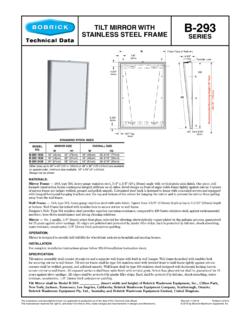Transcription of The rebar locators were tested on 4 parts of an …
1 Curved stair constructed with cast-in-place concreteBy Gregory J. Riley, this article, one structural engineering firm discusses an ongoing challenge they face when working onaddition and renovation the difficulty in determining information about existing reinforcing inconcrete and masonry from Steve Schaefer and Associates, Cincinnati, Ohio, took it upon themselves to perform an evaluation of thefeatures, capabilities and comparative costs of several rebar locators . The following article is an overview of their Steven Schaefer Associates, we work on several addition and renovation projects each year. Unfortunately,as-built drawings of the existing structures are not always available, and we often need to make decisionsthat depend on knowledge about the existing construction.
2 While some aspects of the existing constructioncan be visually determined, it is more difficult to determine information about the reinforcing steel used inconcrete or masonry. A common way of estimating this information is to use a rebar are several rebar locators available on the market. These locators vary significantly in their level ofsophistication, features, capabilities, and cost. Our firm has used several different locators in the past, withvarying degrees of success. We were looking for one rebar locator that met our needs for accuracy andreliability, while at the same time being cost-efficient for a firm that used the equipment only on an occasionalbasis. Therefore, we decided to review and test several different rebar locators .
3 The rebar locators that wereincluded in our test, along with some of their capabilities and features, are summarized in Table July/August 2003 How Do They Measure Up? rebar locators tested by Steven Schaefer and Associates, SpecimensThe rebar locators were tested on 4 parts of an existing tilt-up concrete building, and a circular concrete bridge reinforcing for each specimen is summarized below:1. The underside of a curved, cast-in-place concretestair with #5 bars at 12-inches (on center) each bottom layer of bars was located 2-inches clear abovethe bottom of the A 7 concrete tilt-up wall panel with #4 verticalbars at 12-inches , and #5 horizontal bars at18 -inches The reinforcing was located in theapproximate center of the A 7 -inch concrete tilt-up wall panel with#4 vertical bars at 8-inches in each face, and#3 ties at 9 5/8-inches in the door An 18-inch diameter building column with(8)-#9 vertical bars and #3 hoop ties at 10-inches A 36-inch diameter bridge column withunknown SummaryFisher M-101.
4 This model is intended to detect thepresence of metallic objects only. It does not provideinformation regarding the depth of cover to thereinforcement, or the rebar size. This locator was ableto adequately detect the presence of the rebar in allcases except the building column. One potentialissue we discovered was that it was difficult to reducethe sensitivity of the M-101 enough to distinguishbetween bars that were located closely together, oravoid interference from other metallic objects such asdoor frames and conduit. It may be appropriate for usewhen there is much higher concrete cover than is suitablefor the other pieces of equipment we diameter building )sehcni(setamitsE?revoCsetamitsE?eziSraB rehsiF101-M005$9oNoNitliHleetS01 SFnacsorreFmetySnoitceteDtnemecrofnieR53 5,41$ $4seYoNsemaJstnemurtsnIrotacoLrabeRRH091 ,1$01seYseYqecorProtacoLrabeR5retemoforP )ledoMgolnacS(501,3$7 seYseYelavotorP9 MCretsamrevoC040,4$ ,1$ $6seYoNnocriZ6TM991$ Hilti Ferroscan FS10: The Ferroscan FS10 did thebest overall job of locating bars, measuring the coverdepths, and determining sizes.
5 It was able to detectthe bars and provide reasonable cover measurementsfor all the test locations except the building were able to obtain reasonable bar measurementsfor the stair slab, the tilt-up panel with bars eachface, and the ties of the bridge column. We wereunable to obtain bar size measurements for the panelwith bars centered or the building FS10 has an LCD screen that can displaythe bar locations, giving more confidence in themeasured results. Also, the FS10 comes withsoftware that allows for uploading and analysis ofthe measured PS 20: The PS 20 was able to adequatelylocate the bars and measure the cover depths in allthe tested scenarios except the building column. Itdoes not determine the bar sizes. The PS 20 waseasy to use and fairly Instruments HR rebar Locator: The HRlocator was able to identify the bar locations in allcases except the building column.
6 However, forSTRUCTURE July/August 2003rough concrete surfaces, the meter readingsoccasionally spiked due to the movement of themeter, not due to reinforcing. Using the chartsincluded in the manual, it was possible todetermine the bar covers and diameters. This wasaccomplished by using the difference in two meterreadings: one with the meter directly on theconcrete surface and one with the meter off thesurface by a certain shim distance. However, inaddition to the meter readings, the accuracy ofthis measurement was closely related to theability of the user to properly calibrate themeter. In order to calibrate the meter, it wasnecessary to hold it at the same attitude (angleto the earth s surface) that the meter would bein at the concrete surface and also parallel tothe rebar .
7 For a curved surface, such as theunderside of the stair, this had to be estimatedand probably contributed to some of the Profometer 5 (Scanlog model): TheProfometer 5 was able to locate the rebars andestimate the amount of concrete cover in all casesexcept the building column. The audible toneindicating a rebar with the Profometer 5 seemedto consistently sound approximately 1 past therebar, unless care was taken to move the probeslowly. The cover depth estimates variedsomewhat, but the mean cover measurements werefairly reliable. We had difficulty obtaining bardiameter measurements at locations where the barswere not within 3 of the concrete surface. Thebar diameters were successfully measured at thestairs, although we had some trouble gettingconsistent readings.
8 The on-screen data collectionfeature and statistical analysis of the cover depthswas useful. The stored data may also beuploaded to a computer or printer. Thescanlog model of the Profometer 5 also has agraphical display feature, which was notthoroughly Covermaster CM9: The CM9 wasable to locate the rebars and estimate theamount of concrete cover in all cases exceptthe building column. The cover depthmeasurements were consistent. Similar tothe Profometer 5, we had difficulty obtainingbar diameter measurements in areas wherethe bars were not located within 3 of theconcrete surface. In the stair slab, the barsize measurements were , bar size measurements were toolarge in the wall Covermaster CM42: The CM42 wasable to locate the rebars and determine the bardepths for all locations except the building cover estimates were somewhat inconsistentbut overall were reliable.
9 The bar sizes could becalculated based on meter readings. Similar tothe HR rebar Locator, the dependability of themeasurements depended on the accuracy of themeter readings. This is problematic if the meterreadings are not steady, which can occur whenscanning over a rough rebar Plus: The rebar Plus isdesigned mainly as a rebar locator only, butcan also be used for rough cover estimates. Itwas able to both locate the rebar and providethe cover depths adequately in all cases exceptthe building column. Similar to the Fisher M-101, the rebar Plus experienced some difficultywith nearby door frames and metallic MT6: The MT6 was able toadequately locate the bars and measure thecover depths in all cases except the buildingcolumn.
10 It does not determine the bar MT6 was easy to use and fairly from left: Zircon MT6, JamesInstruments HR Meter, Hilti PS 20, HiltiClockwise from top left: Proceq Profometer 5, ProtovaleRebar Plus, Protovale Covermaster CM9, inability to consistently locate bars and measure cover in the building column wastroublesome. Therefore, we included the round bridge column with the test samples to see if thegeometry of the building column was causing a problem. Although the cover on the bridge columnprevented us from getting consistent bar diameter measurements, the fact that we were able toconsistently locate the barsand measure cover with allthe locators seemed toindicate that the problemwas not the column s our opinion, the bestlocator to use depends on theparticular project.

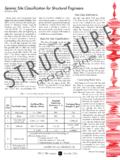

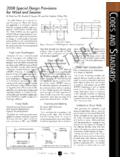





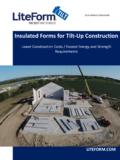


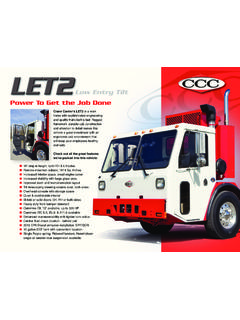
![SNOPRO TRAILERS [BRAND CATALOG]](/cache/preview/2/6/5/6/a/5/7/d/thumb-2656a57d3e5f57c394c4cca80f593fdc.jpg)


